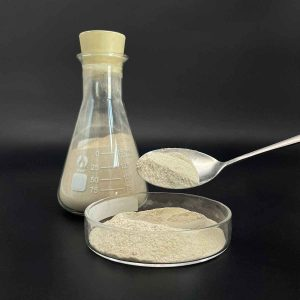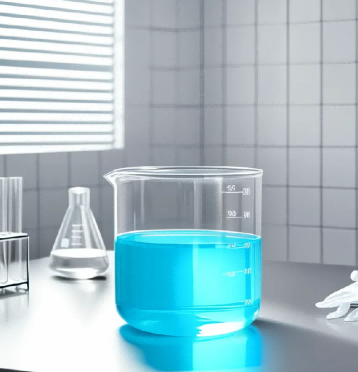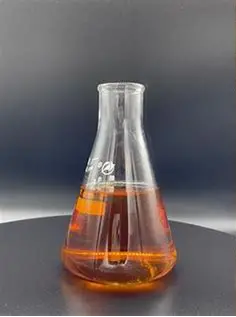1. Introduction
If you’ve ever read the back of a shampoo bottle or a household cleaner, you’ve likely seen the words ‘sodium lauryl sulfate‘—often abbreviated as SLS. This common ingredient is a powerful surfactant, meaning it helps water mix with oil and dirt so they can be rinsed away. But what exactly is sodium lauryl sulfate? And why is it so widely used?

In this article, we’ll break down everything you need to know about sodium lauryl sulfate (also known as sodium dodecyl sulfate or Na lauryl sulfate), including its chemistry, everyday uses, safety profile, and gentler alternatives like coco betaine, decyl glucoside, and sodium cocoyl isethionate.
2. What Is Sodium Lauryl Sulfate?
Sodium lauryl sulfate (SLS), chemically known as sodium dodecyl sulfate, is an anionic surfactant. The term ‘anionic’ refers to its negatively charged head when dissolved in water. This charge helps it bind to oils and lift them off surfaces—making it highly effective for cleaning.
You might also see it labeled as natrium lauryl sulfate (its Latin-derived name), sls sodium lauryl sulfate, or simply lauryl sulfate. Despite minor naming differences, they all refer to the same compound: CH₃(CH₂)₁₁OSO₃⁻Na⁺.
3. The Meaning of Surfactant and How SLS Works
A surfactant—short for ‘surface-active agent’—is a molecule that reduces surface tension between liquids or between a liquid and a solid. This allows water to spread and wet surfaces more easily, which is crucial for cleaning, foaming, and emulsifying.
SLS achieves this by having a hydrophilic (water-loving) head and a hydrophobic (oil-loving) tail. When you lather up with a product containing SLS, the hydrophobic tails grab onto grease and dirt, while the hydrophilic heads keep everything suspended in water until it’s rinsed away.
4. Common Uses of Sodium Lauryl Sulfate

SLS is found in a wide range of products due to its strong cleansing and foaming power:
- Personal care items: shampoos, toothpastes, body washes, and facial cleansers
- Household cleaners: dish soaps, laundry detergents, and all-purpose sprays
- Industrial applications: surfactant for herbicides, wetting agent for grass, and even in some textile processing
In agriculture, SLS and similar compounds like sodium lauryl ether sulphate in shampoo formulations are sometimes used as lawn wetting agents to help herbicides penetrate waxy plant leaves.
5. Safety and Controversy
SLS has faced criticism for being harsh on skin and eyes, especially at high concentrations. It can strip natural oils, leading to dryness or irritation—particularly in people with sensitive skin.
However, regulatory bodies like the FDA and the European Commission consider SLS safe when used in rinse-off products at typical concentrations (usually under 1–2%). It’s not classified as carcinogenic or toxic under normal use conditions.
6. Popular Alternatives to SLS

Because of consumer demand for gentler formulas, many brands now use milder surfactants. These include:
- Sodium laureth sulfate (also called sodium lauryl ether sulfate or sls sodium laureth sulfate): an ethoxylated version of SLS that’s less irritating
- Cocamidopropyl betaine (also known as coco betaine or amidopropyl betaine): an amphoteric surfactant that works well with anionic types to boost foam and reduce irritation
- Alkyl polyglucosides like decyl glucoside and coco glucoside: non-ionic, bio-based surfactants derived from coconut and glucose
- Sodium cocoyl glutamate, sodium lauroyl sarcosinate, and sodium cocoyl isethionate: amino acid–based or sarcosinate surfactants known for mildness
These alternatives are often labeled as ‘SLS-free’ and are common in natural or sensitive-skin formulations.
7. Understanding Surfactant Types: Anionic, Cationic, Non-Ionic, and Amphoteric
Surfactants are categorized by the charge of their hydrophilic head:
- Anionic surfactants (like SLS, ammonium lauryl sulfate, and sodium dodecylbenzene sulfonate) carry a negative charge and are great cleaners and foaming agents.
- Cationic surfactants (such as cetyl trimethyl ammonium bromide or CTAB) are positively charged and often used as conditioners or antimicrobials.
- Non-ionic surfactants (like polysorbate 80, Span80, Pluronic 127, and ethoxylated alcohols) have no charge and are used as emulsifiers or wetting agents.
- Amphoteric surfactants (e.g., cocamidopropyl betaine) can switch charge based on pH and are prized for their mildness and compatibility.
Understanding these categories helps explain why formulators blend different surfactants—like pairing anionic SLS with amphoteric coco betaine—to balance cleansing, foam, and skin feel.
8. Related Compounds and Niche Applications
Beyond personal care, surfactants like lignin sulfonate and methylated seed oil are used as surfactants for weed killer formulations to improve coverage and absorption.
Specialty surfactants such as fluoro surfactants, sodium deoxycholate, and copper 1 bromide serve roles in labs, pharmaceuticals, or electronics. Bio surfactants—derived from microbes or plants—are gaining traction for eco-friendly applications.
Companies like Rohit Surfactants Private Limited manufacture and supply industrial-grade SLS and related compounds, including sodium lauryl sulfate for sale in bulk for cosmetics, agrochemicals, and more.
9. Conclusion
Sodium lauryl sulfate remains one of the most effective and economical anionic surfactants available. While it’s not inherently dangerous, its potential for irritation has driven innovation in milder alternatives like sodium laureth, alkyl polyglucoside, and amphoteric betaines. Whether you’re choosing a shampoo, a herbicide, or a lab reagent, understanding the role and type of surfactant—be it anionic, cationic, non-ionic, or amphoteric—helps you make informed decisions. As formulations evolve, the future of surfactants leans toward sustainability, gentleness, and performance—all without compromising on clean.
Our Website founded on October 17, 2012, is a high-tech enterprise committed to the research and development, production, processing, sales and technical services of ceramic relative materials such as Sodium. Our products includes but not limited to Boron Carbide Ceramic Products, Boron Nitride Ceramic Products, Silicon Carbide Ceramic Products, Silicon Nitride Ceramic Products, Zirconium Dioxide Ceramic Products, etc. If you are interested, please feel free to contact us.


